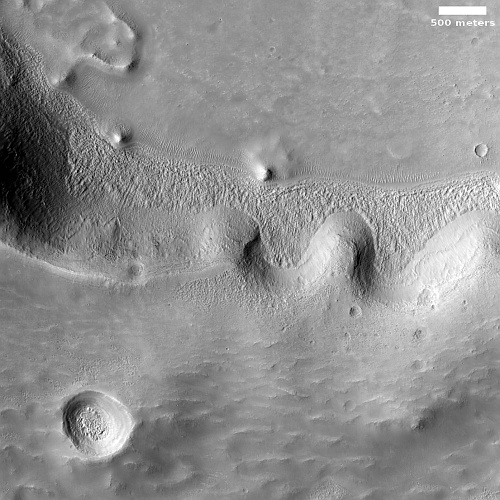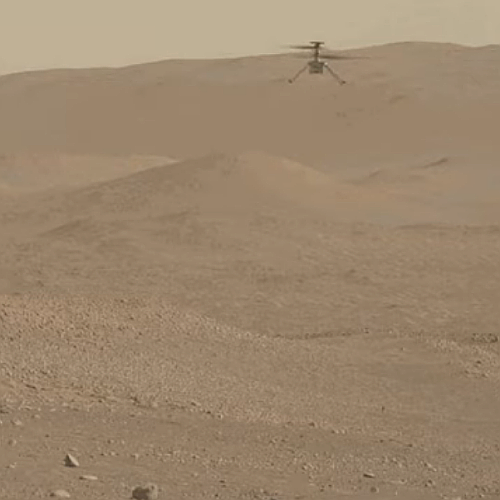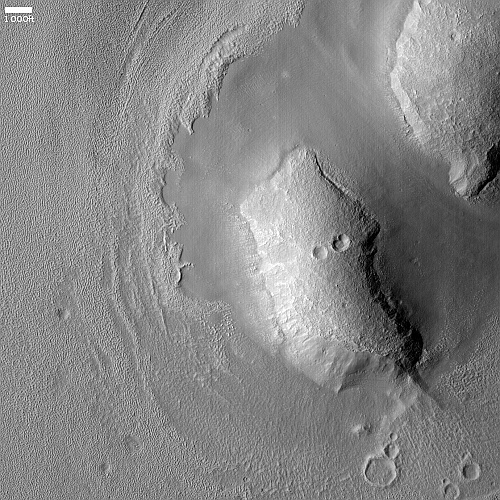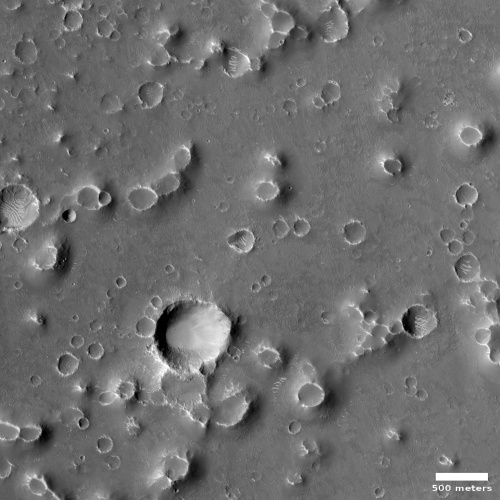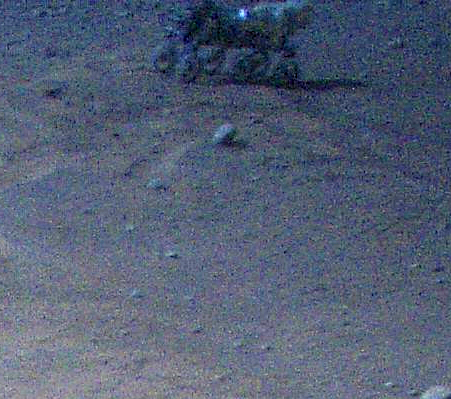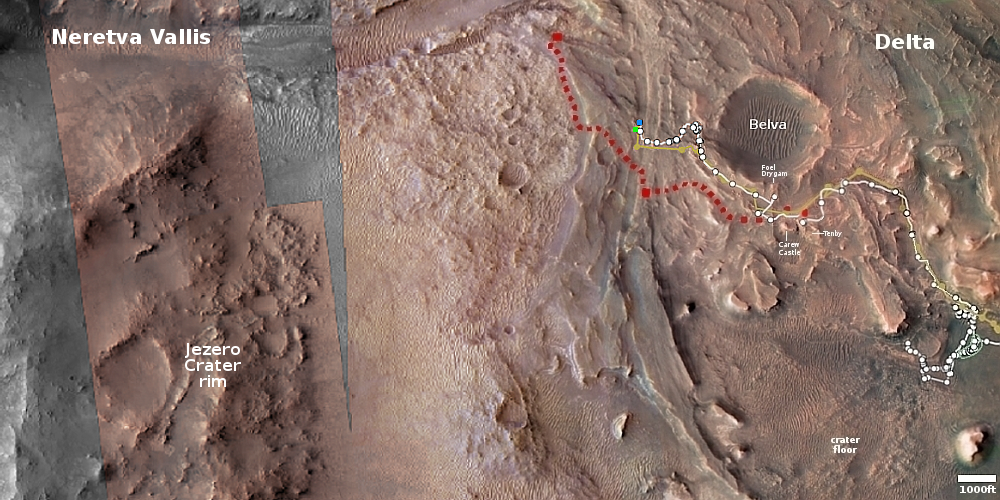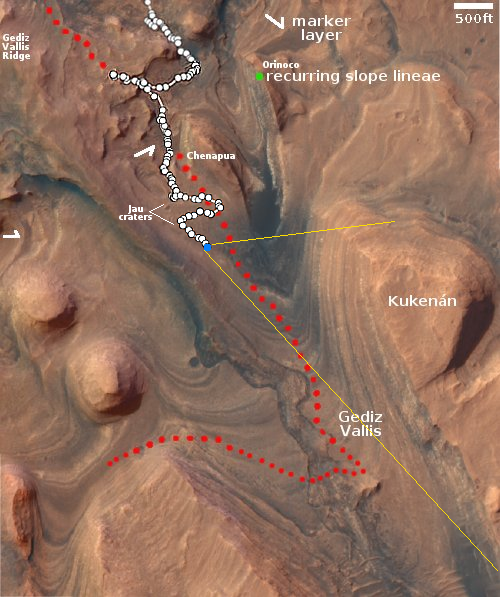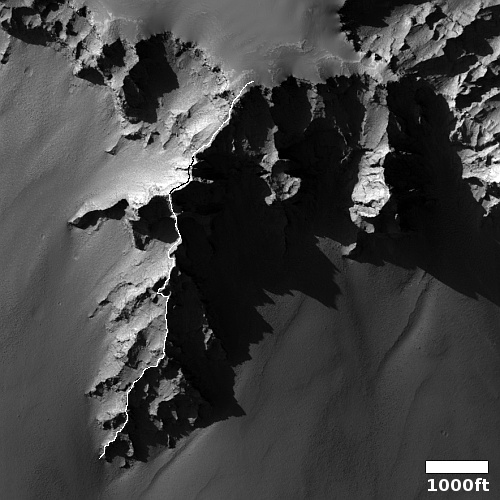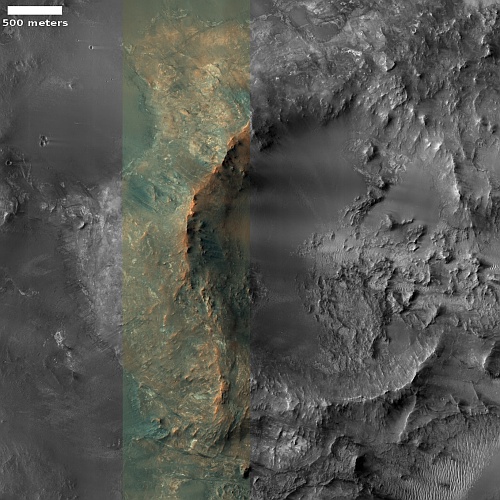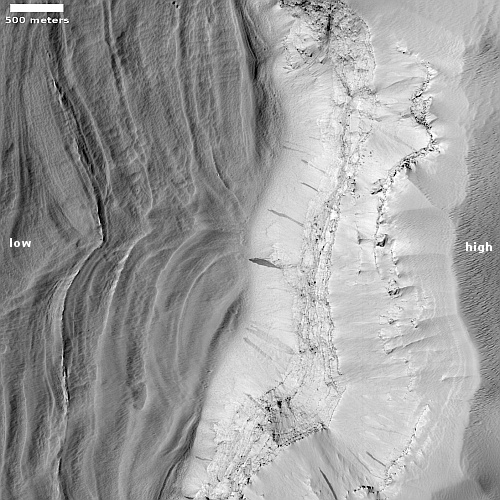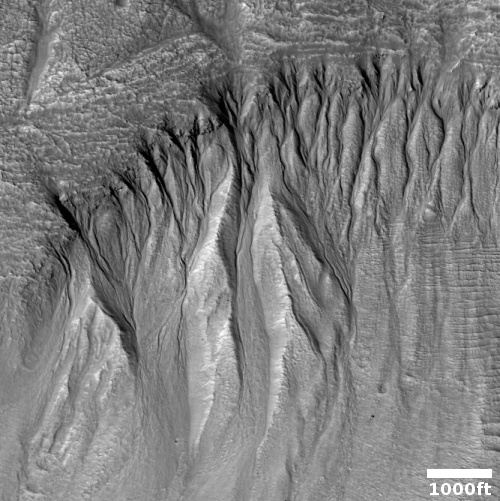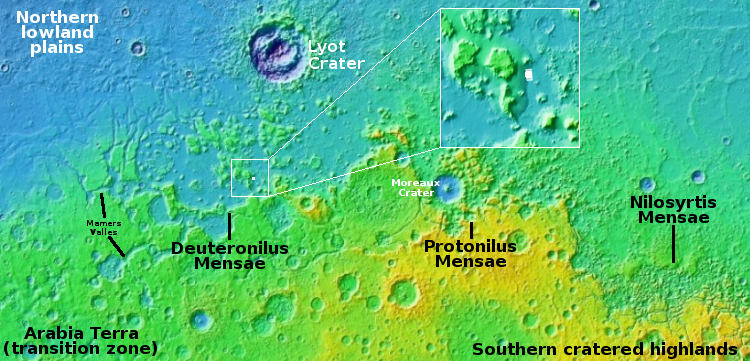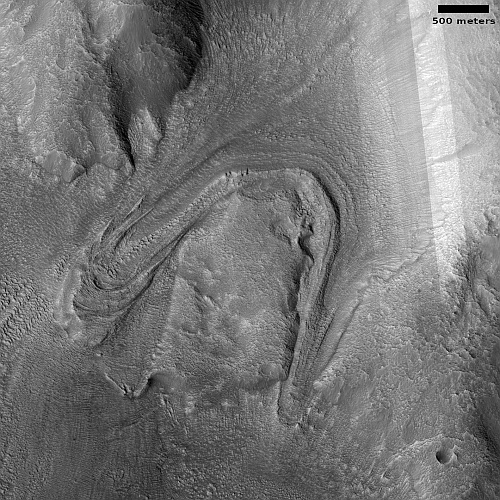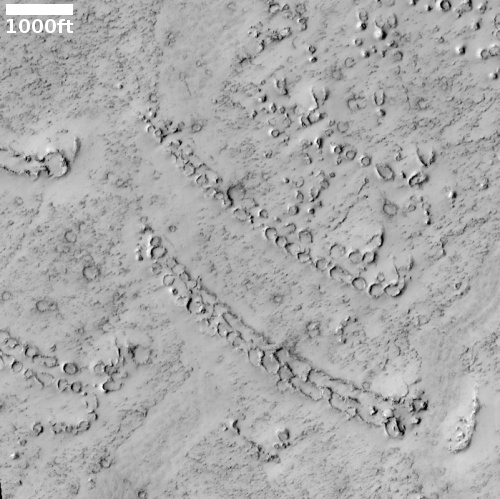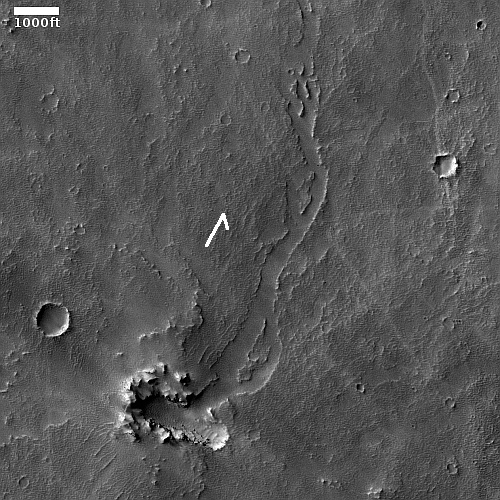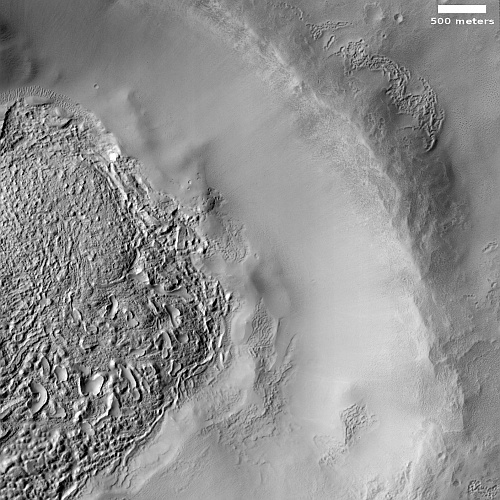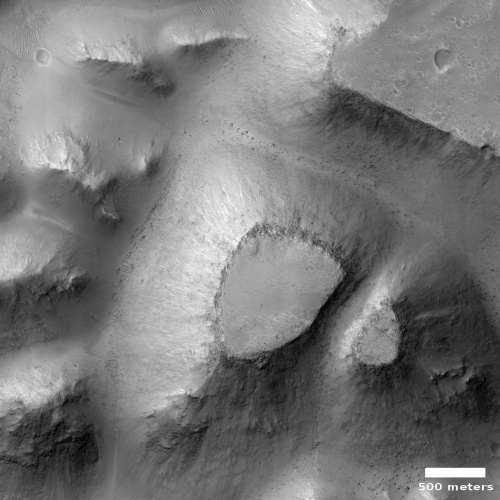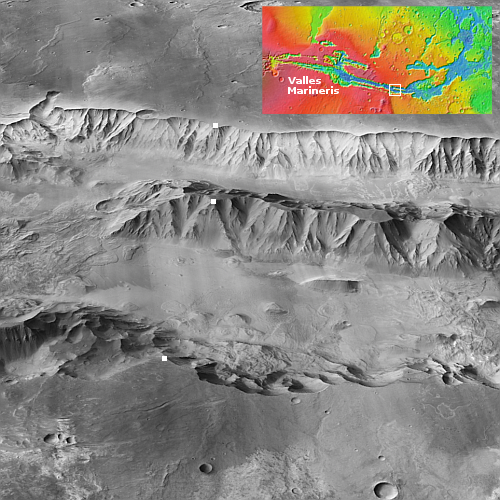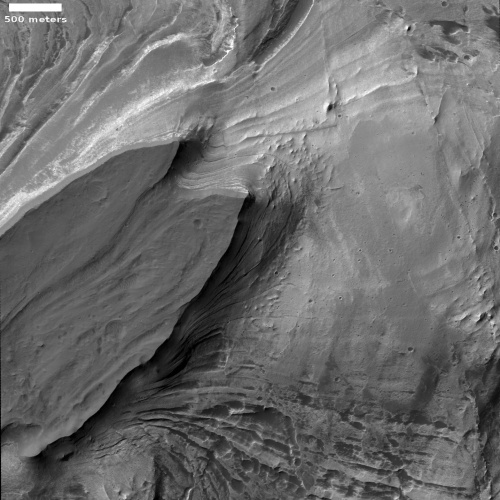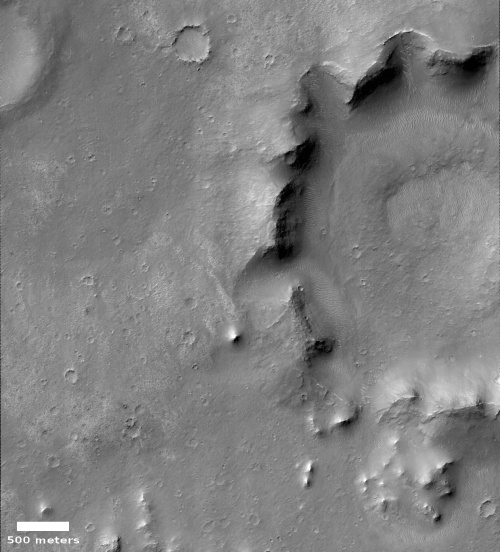Residual ice on the shaded north-facing slope of northern Martian crater
Cool image time! The picture to the right, rotated, cropped, reduced, and sharpened to post here, was taken on April 10, 2023 by the high resolution camera on Mars Reconnaissance Orbiter (MRO). In the headline I am speculating a bit when I call that pile of material bunched up against the interior slope of this unnamed 18-mile-wide crater residual ice. No data is available to me that proves that assumption, but the look, the location, and the general previous data from Mars all tell me that this is what it is.
First, the location within the crater. Everyone who has lived in the northern latitudes where snow falls knows that snow will remain in the shaded slopes that face north — where less direct sunlight falls — much longer than in places where there is more sunlight. You can sometimes even find this residual snow as late as June and July in some such spots.
This phenomenon will be no different on Mars. In those alcoves this material, which looks exactly like glacial features found in many other places in the mid-latitudes of Mars (such as inside the small half-mile-wide crater in the lower left), is well protected, so that even when the rest of the ice sublimated away within the crater it remained. The cliff wall rises five hundred feet to the south, blocking sunlight so that for most of the year little directly sunlight touches this surface.
» Read more
Cool image time! The picture to the right, rotated, cropped, reduced, and sharpened to post here, was taken on April 10, 2023 by the high resolution camera on Mars Reconnaissance Orbiter (MRO). In the headline I am speculating a bit when I call that pile of material bunched up against the interior slope of this unnamed 18-mile-wide crater residual ice. No data is available to me that proves that assumption, but the look, the location, and the general previous data from Mars all tell me that this is what it is.
First, the location within the crater. Everyone who has lived in the northern latitudes where snow falls knows that snow will remain in the shaded slopes that face north — where less direct sunlight falls — much longer than in places where there is more sunlight. You can sometimes even find this residual snow as late as June and July in some such spots.
This phenomenon will be no different on Mars. In those alcoves this material, which looks exactly like glacial features found in many other places in the mid-latitudes of Mars (such as inside the small half-mile-wide crater in the lower left), is well protected, so that even when the rest of the ice sublimated away within the crater it remained. The cliff wall rises five hundred feet to the south, blocking sunlight so that for most of the year little directly sunlight touches this surface.
» Read more

